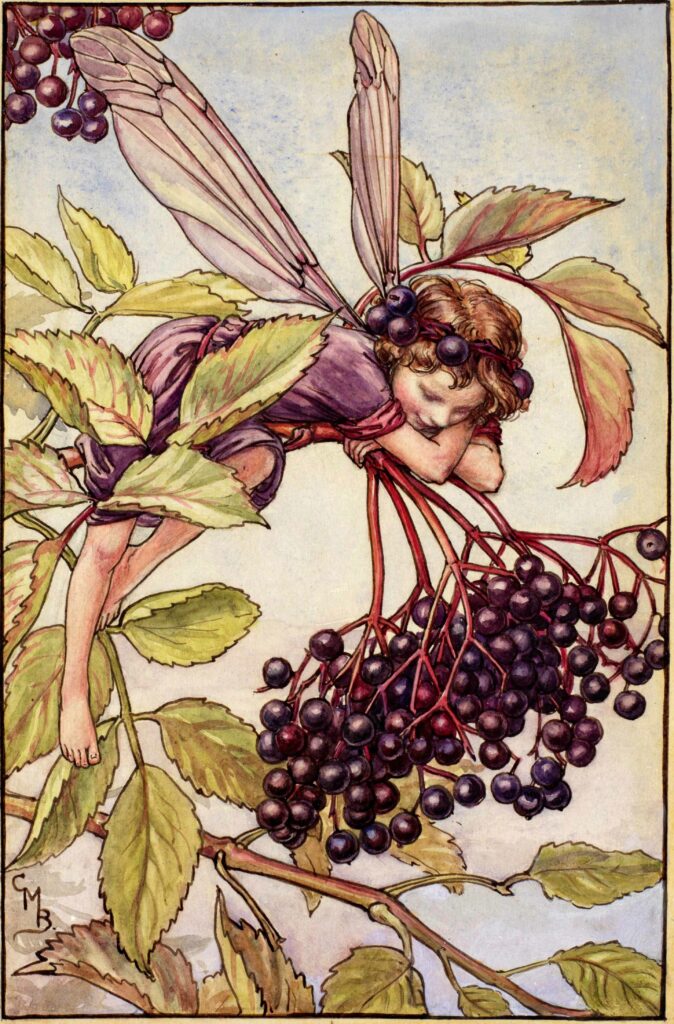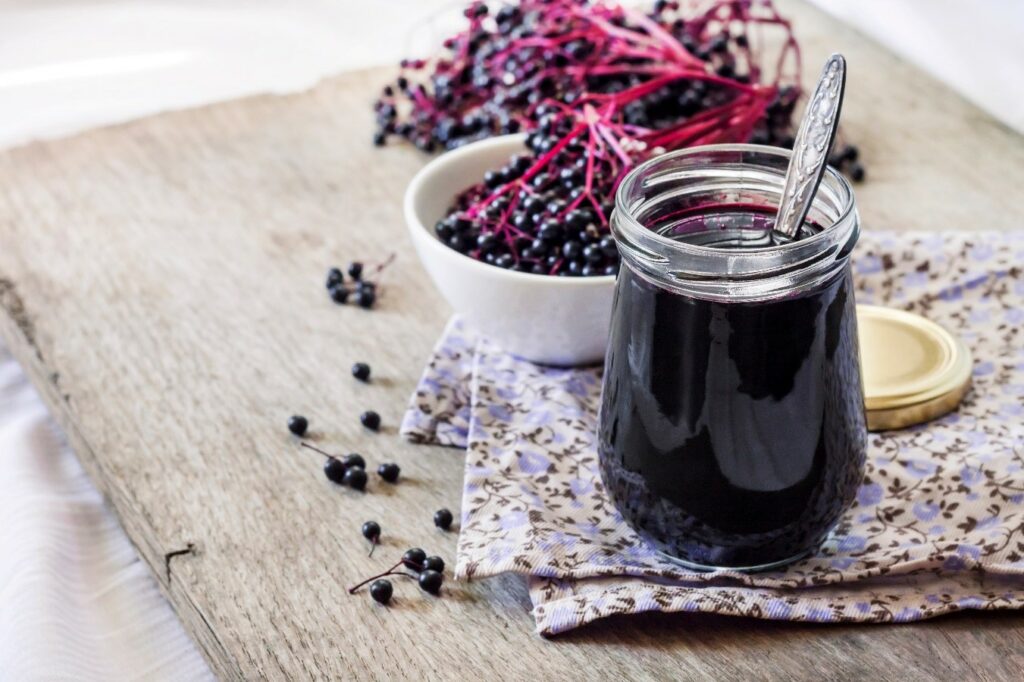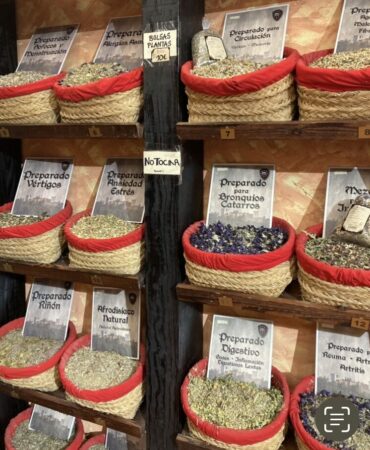Currently Empty: £0.00

Curse or Cure: The precarious world of Plant Lore & Recipe for Elderberry syrup
Words By Kayleigh Sinclair

According to Grieve’s Herbal in 1931, that “the English summer begins with Elderflowers and ends with Elderberries”.
An unremarkable shrub for most of the year that is scattered throughout the deeper, rich soils of hedgerows and woodlands of England, the Elder tree (Sambucus nigra) comes into its own in summer adorned in swathes of pale delicate flowers followed by a powerhouse of blue-black or red immune-boosting berries. With earliest records found dating back as early as 2000BC, the Elder is bathed in more folklore than all other European plants, except perhaps the Mandrake (Mandragora officinarum)!
In English and Scandanavian folklore, an old crone like figure “Hlydemoer”, The Elder Mother, inhabited and guarded the tree. If you wished to harvest wood from the tree, you were required to bow three times and receipt the following: “Old girl, give me some of thy wood and I will give thee some of mine when I grow into a tree.” If you failed to do so, death would follow you within three days.
A tale from Northamptonshire tells the story of a man who cut the stick off an Elder tree and later came across a witch with her arm bandaged in a similar place.

It is thought the name Elder comes from the Anglo-Saxon “aeld” meaning fire because the hollow stems were used as bellows to blow air into the centre of the fire, (they are also said to make
excellent pea shooters). However, the wood itself made for poor fuel as the spongy centre mixed with sap made the fire scream and spit leading people to believe that burning it would bring death and disaster, the boiling sap was the Devil perched upon your chimney top spitting down your flu!
Along with similar trees found among the English countryside like Hawthorn and Rowan, the Elder has been heavily associated with the belief of Fae or Fairies, which dates back to England in the
1400s and Greek mythology before that.
The best time to encounter Fae in these trees was on Midsummer’s Eve in England and Denmark or Samhain (Halloween) in Scotland, when the Fairy King and Queen and their train would pass by. However if you were foolish enough to fall asleep under the Elder, you ran the risk of being transported to the Underworld and unable to escape. After all, the Elder mother was Queen of the Underworld. The alternative theory came from the mildly narcotic scent emitted by the flowers and the fact that the tree itself contains compounds that are metabolised into cyanide in the body.
Not all were in favour of the Elder and the beliefs that had been passed down through generations, the worship of trees and their deities were banned in the Holy Roman Empire by Charlemagne in the 9th Century and again by the Synod of Trier in 1227. Elder was not the only tree to be effected by the suppression but it bore a double curse, the first legend suggested that Judas Iscariot used an elder tree to hang himself on and secondly it was one of the trees used for the creation of the crucifixion cross.

Despite its seemingly negative connotations and curses, Elder has been used for millennia as a cure-all. Hippocrates, the father of medicine himself and the namesake behind the Hippocratic Oath (a Greek physician from 460BC), called Elderberry the “Medicine Chest” for the wide range of applications that all parts of the Elder were used for. This was a sentiment that was followed by Theophrastus from 371-287BCE and Pliny the Elder from 23-79 AD who recorded the first scientific name for the Tree (Sambuca) in AD 77.
Elderflower tea is a traditional remedy for colds and flu-like symptoms, while elderberry drinks have long been prescribed to soothe coughs and sore throats.
The anthocyanin’s found in both the berries are a group of antioxidants found in red, blue and purple fruits and vegetables, they’re one of the primary reasons blueberries were labelled as a superfood! Studies has shown that the consumption of these compounds may help protect the heart, and prevent inflammation. Coupled with vitamins A and C, it makes it wonderful winter tonic especially when combined with warming spices such as ginger and cinnamon to support the immune system.

Key constituents include:
| Berries | Flowers |
| Flavonoids | Flavonoids |
| Anthocyanins | Tripenes |
| Lectins | Volatile oil (0.7%) |
| Vitamin A | Mucilage |
| Vitamin C | Tannins |
It has been said to be antiviral, anti-catarrhal, anti-inflammatory, diuretic and increase sweating.
Israeli research conducted in 1995 found 90% of people given elderberry extract recovered in 2-3 days whereas those given a placebo took up to 6 days.
In modern day, Elderflower and berries have made their way onto supermarket shelves as tonics, cordials, desserts and many more delightful and delicious items.
With the end of summer looming ever closer, now is the time to start keeping an eye out for the turning of the berries and stocking up on delightfully dark syrups, jams and robs to tide you through the winter season. Just make sure you ask permission from Hyldemoer!
Simple Soothing Elderberry Syrup
Ingredients:
- 750ml water
- 250ml fresh elderberries or ½ cup of dried elderberries (these can be found in health food shops)
- 1 cinnamon stick
- 250ml honey
- 3 whole cloves
- 1 teaspoon sliced fresh ginger root
- Muslin bag/ fine mesh sieve
- Saucepan
- Sterilised 500ml jar with screw lid
- Jug
- Funnel (optional but makes pouring easier!)
Prefix: If using fresh elderberries, ensure all stems and leaves are removed, as these are toxic and wash the berries before use.
Step 1: In a saucepan over medium heat, add all ingredients except for the honey and bring to a boil. Reduce the heat and simmer for 30 minutes or until the mixture has reduced by half to approx.
375ml.
Step 2: Mash berries with a potato masher or back of a spoon to release juices. Strain the liquid through a muslin bag or very fine mesh sieve in a jug, discarding pulp, cloves and cinnamon stick afterwards.
Step 3: Let cool for around half an hour or until lukewarm and stir in the honey until the mixture combines.
Step 4: Pour into your clean and sterilised jar, label and keep refrigerated for 4 weeks. Can be drizzled over ice cream, custard and crumbles or taken directly as a tablespoon a day for adults to support the immune system!




